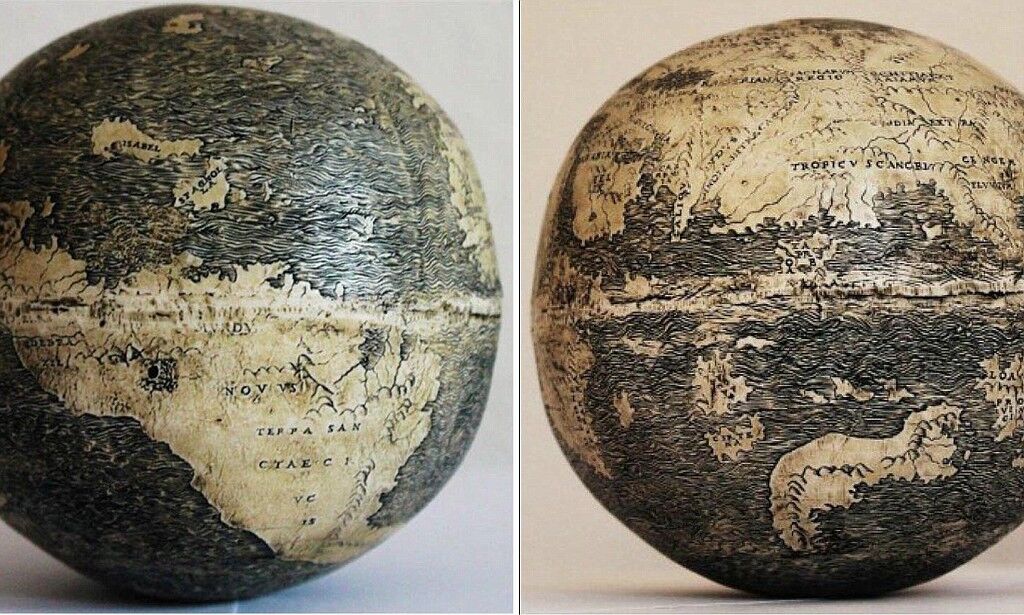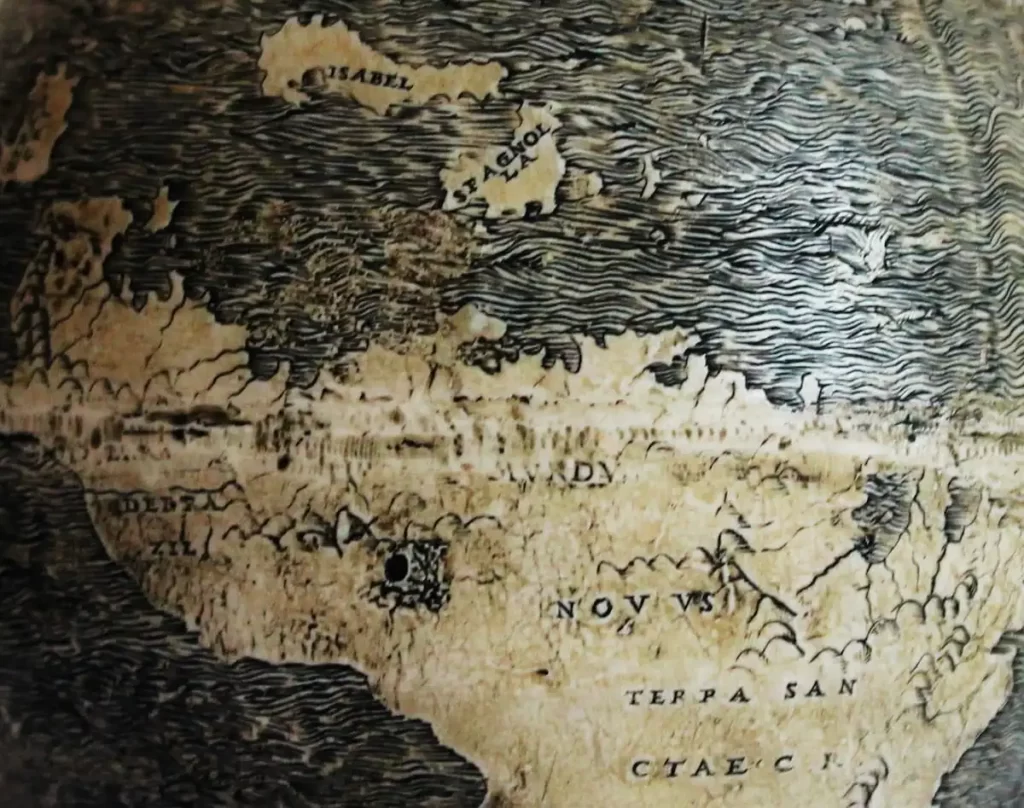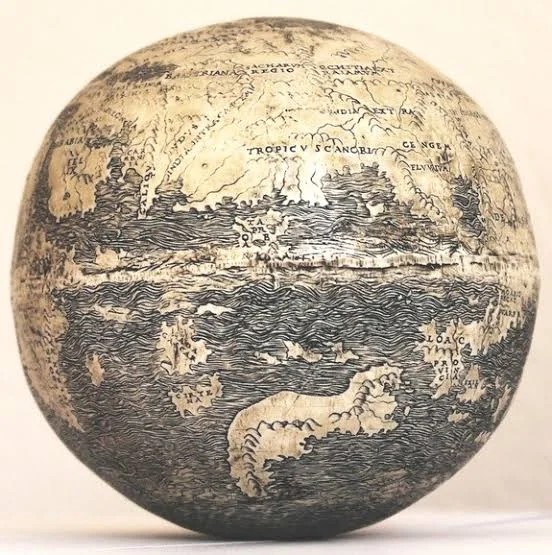In a groundbreaking discovery, art historians and researchers have unveiled a significant artifact that stands as a testament to the…

In a groundbreaking discovery, art historians and researchers have unveiled a significant artifact that stands as a testament to the genius of the Renaissance polymath, Leonardo da Vinci. The Globe from 1504, attributed to none other than the master himself, has emerged as the earliest recorded sphere depicting the New World, crafted meticulously on two merged bottom sections of ostrich eggs.

The revelation comes as a momentous addition to the art world, shedding new light on Da Vinci’s fascination with the unexplored and his unparalleled ability to merge art and science seamlessly. Discovered in a private collection, this masterpiece is now poised to rewrite the history of cartography and Leonardo’s contributions to it.
Experts suggest that the choice of ostrich eggs as the canvas for this masterpiece is not arbitrary. Da Vinci, known for his insatiable curiosity and penchant for experimentation, must have selected the eggs for their smooth, robust surface, allowing him to execute his intricate vision with unparalleled precision. The merging of two egg sections served as a unique and innovative solution, providing a spherical canvas for Da Vinci to project his revolutionary map of the New World.
The Globe from 1504 is a visual marvel, showcasing an early representation of the Americas that predates many other known maps. Da Vinci’s artistic prowess is evident in the fine details etched onto the eggs, capturing the contours of the continents with an astonishing degree of accuracy, given the limited geographical knowledge of the time.

The discovery has ignited a fervor among art historians, prompting them to reevaluate Da Vinci’s role not only as a painter and inventor but also as a cartographer. The Globe from 1504 challenges the conventional narrative surrounding the history of mapping, positioning Da Vinci as an innovator who was ahead of his time.
As experts delve deeper into the details of the globe, questions about Da Vinci’s sources of information and the extent of his geographical knowledge are emerging. The meticulous nature of the craftsmanship suggests a level of research and dedication that goes beyond mere artistic expression, indicating Da Vinci’s deep interest in understanding and representing the world around him.
The unveiling of the Globe from 1504 is set to be a pivotal moment in the world of art and cartography, prompting scholars to reexamine other works attributed to Da Vinci for potential hidden gems of scientific insight. This rediscovery not only enriches our understanding of Leonardo da Vinci but also underscores the interconnectedness of art and science during the Renaissance period.

In the coming months, the Globe from 1504 will undergo extensive analysis and conservation efforts to ensure its preservation for future generations. As the art world eagerly awaits more revelations about this extraordinary find, one can only wonder what other secrets Da Vinci’s works may still hold, waiting to be uncovered and appreciated anew in the 21st century.